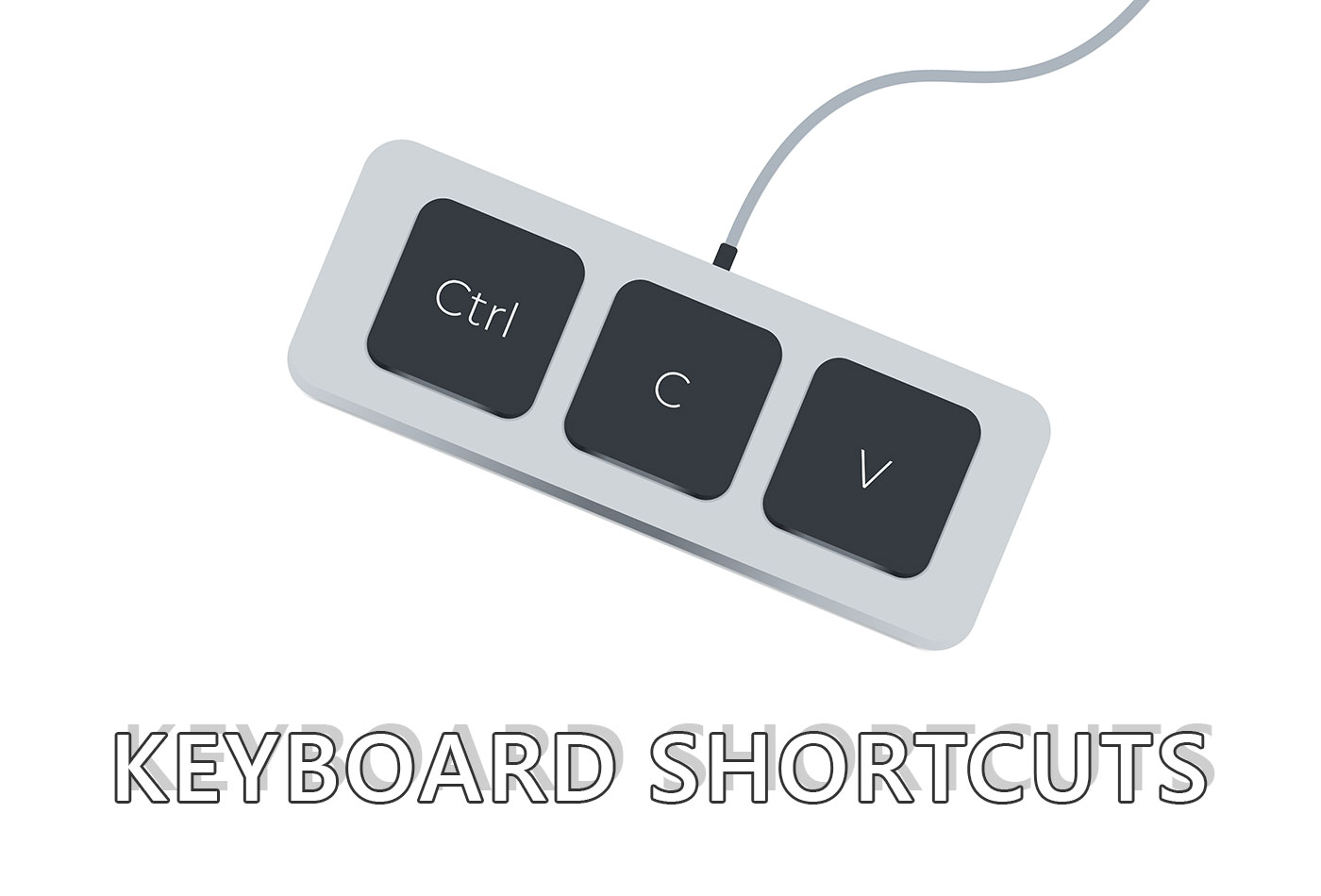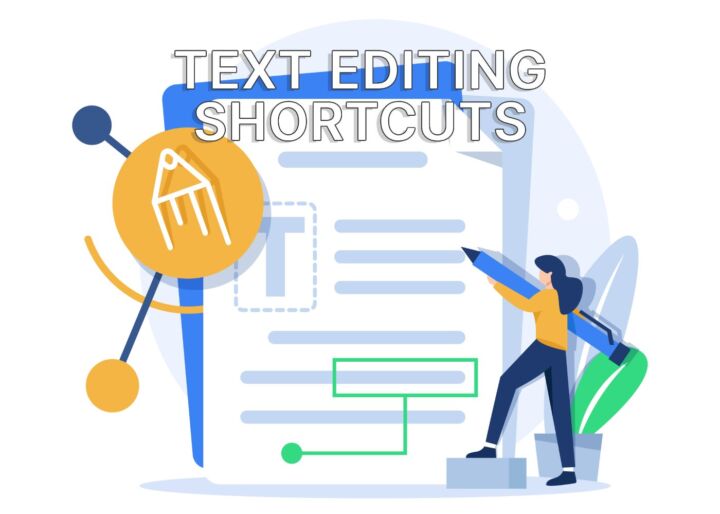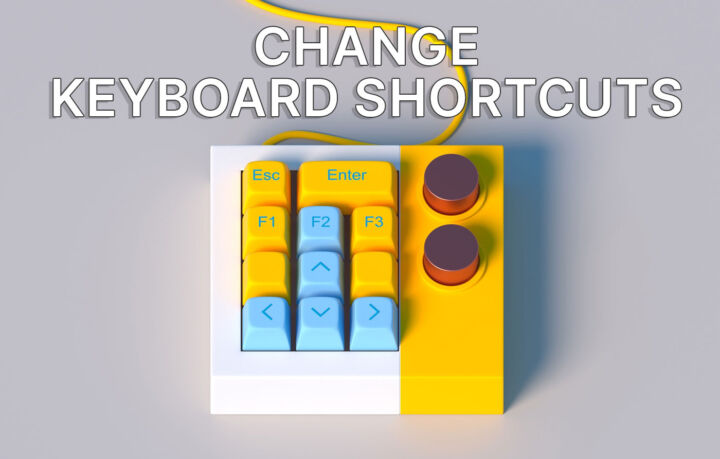- Here’s a list of the most useful Word keyboard shortcuts grouped by category.
- For many people Word is the best text editor there is, especially if they’re familiar with the entire Microsoft Office suite.
- Knowing the important keyboard shortcuts in Word can save you a ton of time, if you edit documents frequently.

As you already know I’m a big fan of using keyboard shortcuts for work. When I learn a new program I always look at the list of keyboard shortcuts to speed up as much as possible the most repetitive tasks.
Microsoft Office is the most used office suite at the moment, even if there are plenty of competitors out there that are sometimes free. That doesn’t matter, as Microsoft is still the go-to suite, mostly because the trio consisting of Word-Excel-Powerpoint and the document formats associated with these programs is widely adopted and integrated with third-party services, not just with Microsoft’s own.
Microsoft Office is the Xerox of document editing and Word is the word processor of choice. It doesn’t matter if you are just using it for basic documents or for serious work. You need to know at least some of the Word keyboard shortcuts below:
Learn how to launch Word using the Office hardware key shortcut.
CONTENTS
General
| Shortcut | Action |
| Ctrl + N | Create a new document |
| Ctrl + O | Open existing document |
| Ctrl + S | Save current document |
| F12 | Open the Save As dialog box |
| Ctrl + W | Close the current document |
| Ctrl + Z | Undo the last action |
| Ctrl + Y | Redo the last action you undid |
| Alt + Ctrl + S | Split a window or remove the split view |
| Ctrl + Alt + V | Print Layout View |
| Ctrl + Alt + O | Outline View |
| Ctrl + Alt + N | Draft View |
| Ctrl + F2 | Print Preview View |
| F1 | Open Help |
| Alt + Q | Go to the “Tell me what you want to do” box |
| F9 | Refresh the field codes in the current selection |
| Ctrl + F | Search in the current document |
| F7 | Run a spelling and grammar check |
| Shift + F7 | Open the thesaurus. If a word is selected, Shift + F7 looks up that particular word in the thesaurus. |
Moving Inside The Document
| Shortcut | Action |
| Left / Right Arrow | Move the cursor one character to the left or right |
| Ctrl + Left / Right Arrow | Move one word to the left or right |
| Up / Down Arrow | Move up or down one line |
| Ctrl + Up / Down Arrow | Move up or down one paragraph |
| End | Move to the end of the current line |
| Ctrl + End | Move to the end of the document |
| Home | Move to the beginning of the current line |
| Ctrl + Home | Move to the beginning of the document |
| Page Up / Page Down | Move up or down one screen |
| Ctrl + Page Up / Page Down | Move to the previous or the next browse object (after performing a search) |
| Alt + Ctrl + Page Up / Page Down | Move to the top or bottom of the current window |
| F5 | Open the Find dialog box with the “Go To” tab selected, so you can quickly move to a specific page, section, bookmark. |
| Shift + F5 | Cycle through the last three locations where the cursor was placed. If you just opened a document, Shift + F5 moves you to the last point you were editing before closing the document. |
Selecting Text
| Shortcut | Action |
| Shift + Left / Right Arrow | Extend current selection by one character to the left or right |
| Ctrl + Shift + Left / Right Arrow | Extend current selection by one word to the left or right |
| Shift + Up / Down Arrow | Extend selection up or down one line |
| Ctrl + Shift + Up / Down Arrow | Extend selection to the beginning or end of the paragraph |
| Shift + End | Extend selection to the end of the line |
| Shift + Home | Extend selection to the beginning of the line |
| Ctrl + Shift + Home / End | Extend selection to the beginning or end of the document |
| Shift + Page Down / Page Up | Extend selection down or up by one screen |
| Ctrl + A | Select the entire document |
| F8 | Enter selection mode. In this mode, you can use the arrow keys to extend your selection. Press F8 up to five times to extend the selection outward (SHIFT + F8 works backward). The first press enters selection mode, the second press selects the word next to the cursor, the third press selects the whole sentence, the fourth press selects all the characters in the current paragraph, and the fifth press the entire document. Press Esc any time to leave selection mode. |
| Ctrl + Shift + F8 | Selects a column. Once the column is selected, you can use the left and right arrow keys to extend the selection to nearby columns. |
Editing Text
| Shortcut | Action |
| Backspace | Delete one character to the left of the cursor |
| Ctrl + Backspace | Delete one word to the left of the cursor |
| Delete | Delete one character to the right of the cursor |
| Ctrl + Delete | Delete one word to the right of the cursor |
| Ctrl + C | Copy selected text to the Clipboard |
| Ctrl + X | Cut selected text to the Clipboard |
| Ctrl + V | Paste the Clipboard contents |
| Ctrl + F3 | Cut selected text to the Spike. The Spike is a variant of the regular clipboard. You can keep cutting text to the Spike and Word remembers everything. When you paste the Spikes contents, Word pastes everything and places each item on its own line. |
| Ctrl + Shift + F3 | Paste the Spike contents |
| Alt + Shift + R | Copy the header or footer used in the previous section of the document |
Character Formatting
| Shortcut | Action |
| Ctrl + B | Apply bold formatting |
| Ctrl + I | Apply italic formatting |
| Ctrl + U | Apply underline formatting |
| Ctrl + Shift + W | Apply underline formatting to words, but not the spaces between words |
| Ctrl + Shift + D | Apply double underline formatting |
| Ctrl + D | Open the Font dialog box |
| Ctrl + Shift + < or > | Decrease or increase font size one preset size at a time |
| Ctrl + [ or ] | Decrease or increase font size one point at a time |
| Ctrl + = | Apply subscript formatting |
| Ctrl + Shift + Plus key | Apply superscript formatting |
| Shift + F3 | Cycle through case formats for your text. Available formats: sentence case (capital first letter, everything else lower case), lowercase, uppercase, title case (the first letter in each word capitalized), and toggle case. |
| Ctrl + Shift + A | Formats all letters as uppercase |
| Ctrl + Shift + K | Formats all letters as lowercase |
| Ctrl + Shift + C | Copies the character formatting of a selection |
| Ctrl + Shift + V | Pastes formatting onto the selected text |
| Ctrl + Space | Removes all manual character formatting from a selection |
Weirdly, but Word doesn’t have a shortcut to cross out text. Fortunately, there’s a way to strikethrough text using the keyboard. The method also works in Outlook.
Paragraph Formatting
| Shortcut | Action |
| Ctrl + M | Increases a paragraph’s indent one level each time you press it |
| Ctrl + Shift + M | Reduces a paragraph’s indent one level each time you press it |
| Ctrl + T | Increases a hanging indent each time you press it |
| Ctrl + Shift + T | Reduces a hanging indent each time you press it |
| Ctrl + E | Center a paragraph |
| Ctrl + L | Left-align a paragraph |
| Ctrl + R | Right-align a paragraph |
| Ctrl + J | Justify a paragraph |
| Ctrl + 1 | Set single-spacing |
| Ctrl + 2 | Set double-spacing |
| Ctrl + 5 | Set 1.5 line Spacing |
| Ctrl + 0 | Remove one line spacing preceding a paragraph |
| Ctrl + Shift + S | Open a popup window for applying styles |
| Ctrl + Shift + N | Apply the normal paragraph style |
| Alt + Ctrl + 1 | Apply the Heading 1 style |
| Alt + Ctrl + 2 | Apply the Heading 2 style |
| Alt + Ctrl + 3 | Apply the Heading 3 style |
| Ctrl + Shift + L | Apply the List style |
| Ctrl + Q | Remove all paragraph formatting |
Inserting
| Shortcut | Action |
| Shift + Enter | Insert a line break |
| Ctrl + Enter | Insert a page break |
| Ctrl + Shift + Enter | Insert a column break |
| Ctrl + hyphen (-) | Insert an optional hyphen or em dash. This tells Word not to use a hyphen unless the word breaks at the end of a line. If it does, Word will use a hyphen where you placed it. |
| Alt + Ctrl + hyphen (-) | Insert an em dash |
| Ctrl + Shift + hyphen (-) | Insert a non-breaking hyphen. This tells Word not to break a word at the end of a line, even if there’s a hyphen there. Useful for something like a telephone number you want to appeared on one line. |
| Ctrl + Shift + Spacebar | Insert a non-breaking space |
| Alt + Ctrl + C | Insert a copyright symbol |
| Alt + Ctrl + R | Insert a registered trademark symbol |
| Alt + Ctrl + T | Insert a trademark symbol |
Outlines
| Shortcut | Action |
| Alt + Shift + Left / Right Arrow | Promote (move to the left) or demote (move to the right) a line |
| Ctrl + Shift + N | Demote an outline level to the regular body text |
| Alt + Shift + Up / Down Arrow | Move the line with the insertion point up or down in the outline |
| Alt + Shift + Plus or Minus keys | Expand or collapse text under a heading |
| Alt + Shift + A | Expand or collapse all text or headings in an outline |
| Alt + Shift + L | Show the first line of body text or all body text |
| Alt + Shift + 1 | Show all headings that have the Heading 1 style applied |
| Alt + Shift + any other number key | Show all headings up to that level |
Tables
| Shortcut | Action |
| Tab | Move to the next cell in a row and select contents |
| Shift + Tab | Move to the previous cell in a row and select contents |
| Alt + Home / End | Move to the first or last cell in a row |
| Alt + Page Up / Page Down | Move to the first or last cell in a column |
| Up / Down Arrow | Move to the previous or next row |
| Shift + Up / Down Arrow | Select the cell in the row above or below the cursor or selection. Keep pressing the shortcut to select more cells. If there are multiple cells in a row selected, the combo selects the same cells in the row above or below. |
| Alt + 5 on the keypad (with NumLock off) | Select an entire table |
Also read: Useful Excel keyboard shortcuts and important PowerPoint shortcuts
Do you know other important Word shortcuts that are missing from this article? Let me know in a comment so I can update the list.
Also, if you wish to customize the existing shortcuts it’s easy to modify, remove, or create a new Word shortcut.
More about Microsoft Word:

Useful Excel Keyboard Shortcuts That Save You Time On PC







